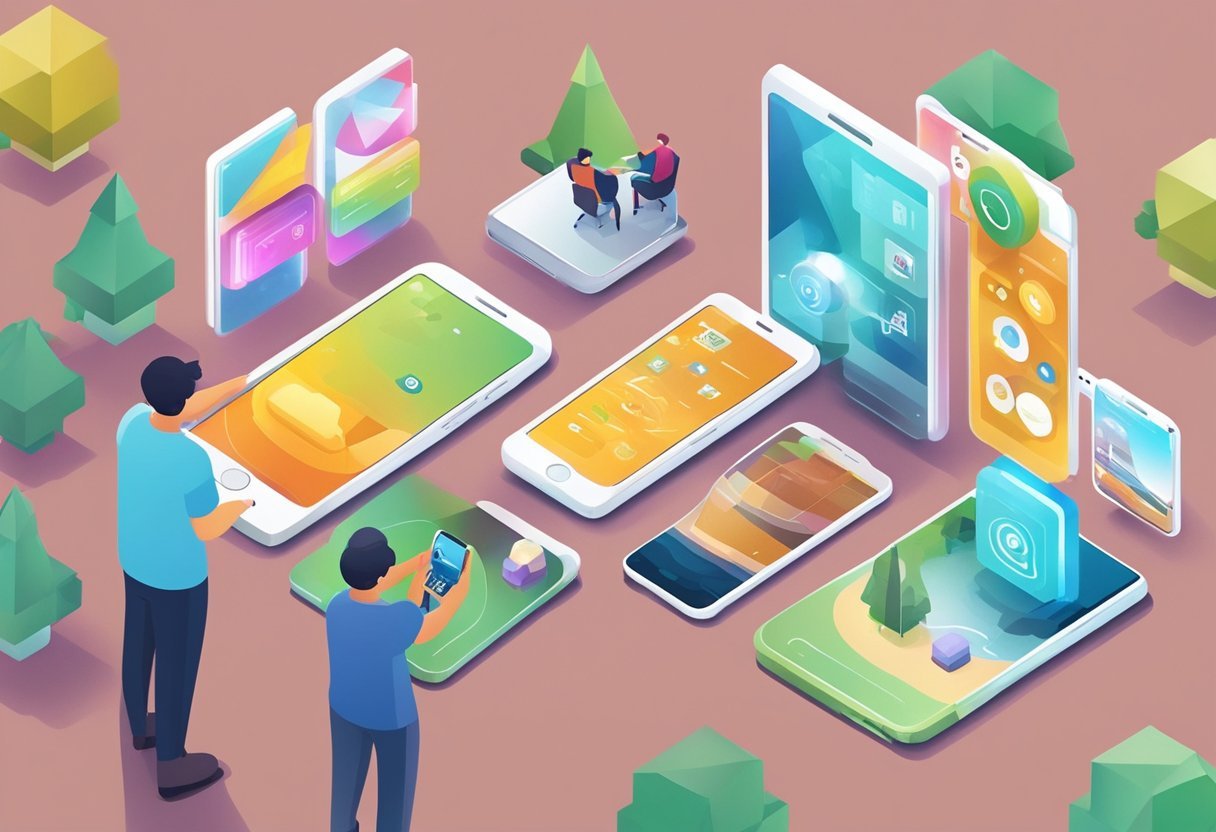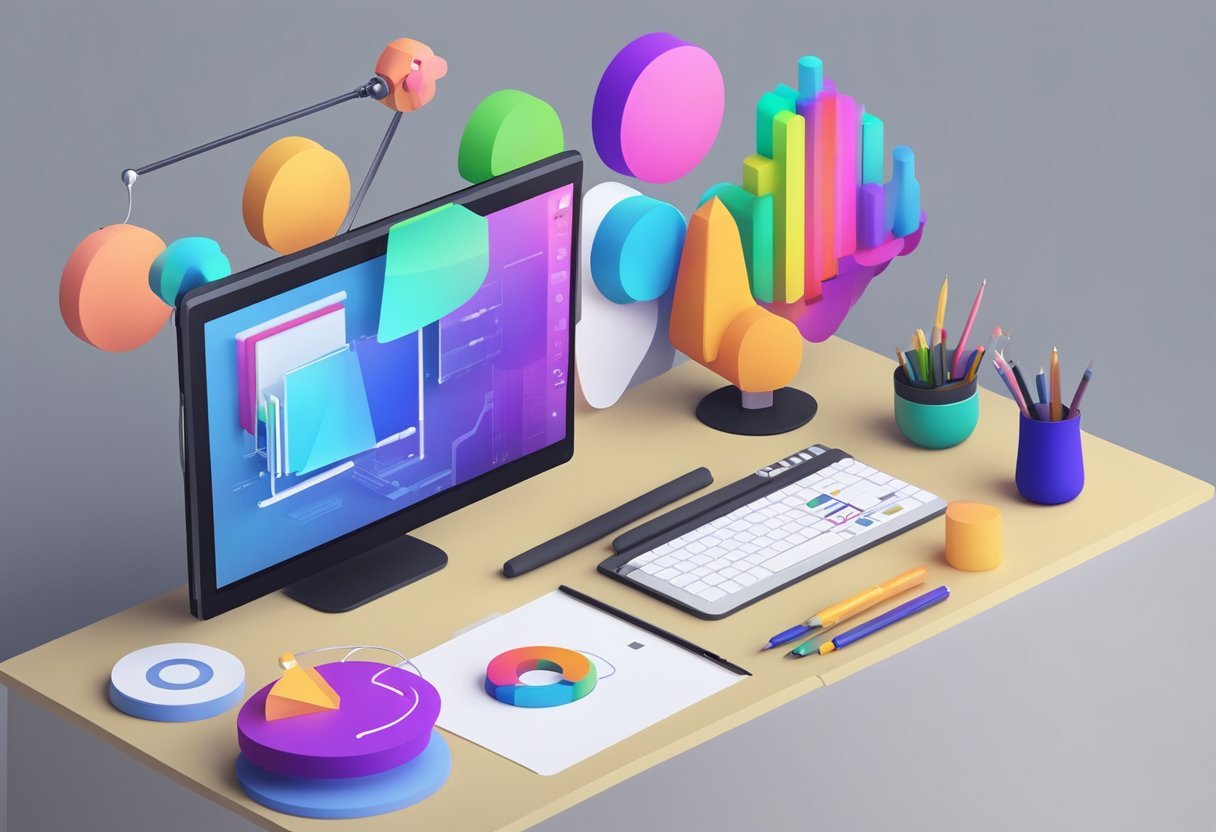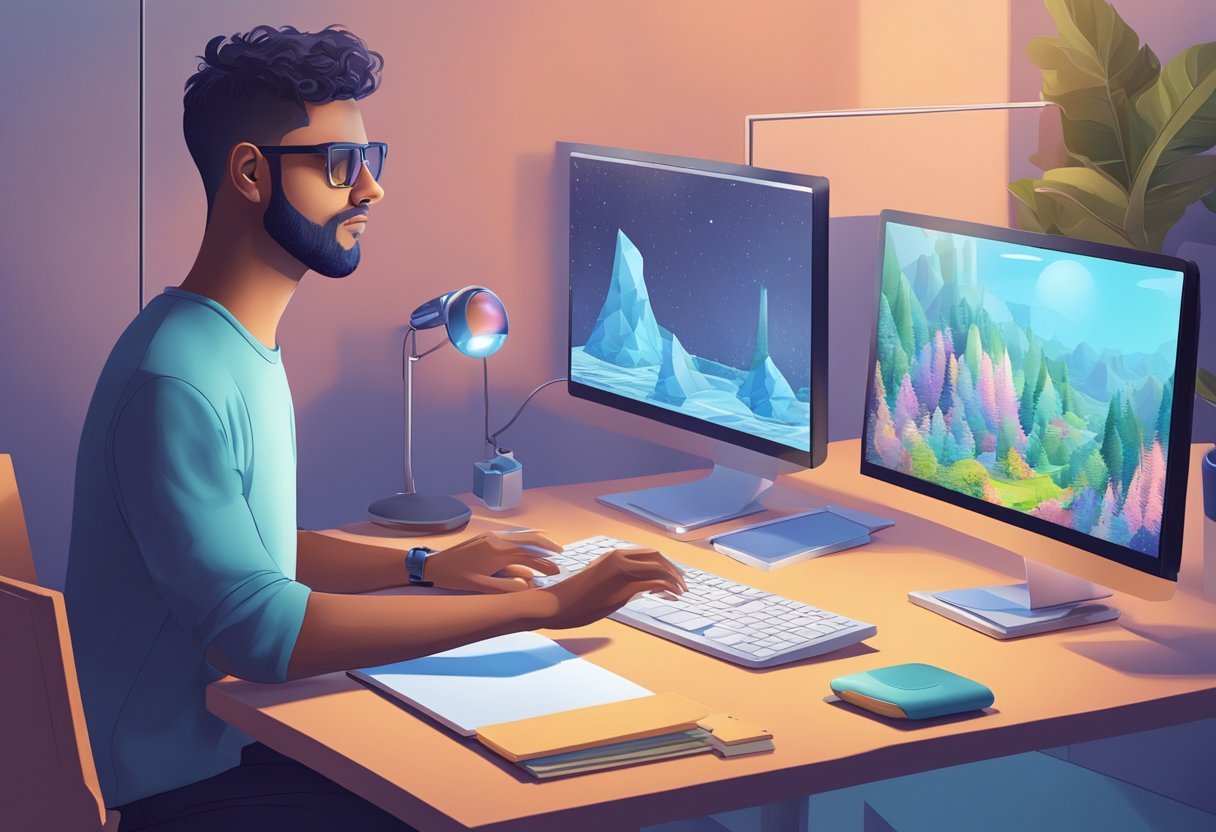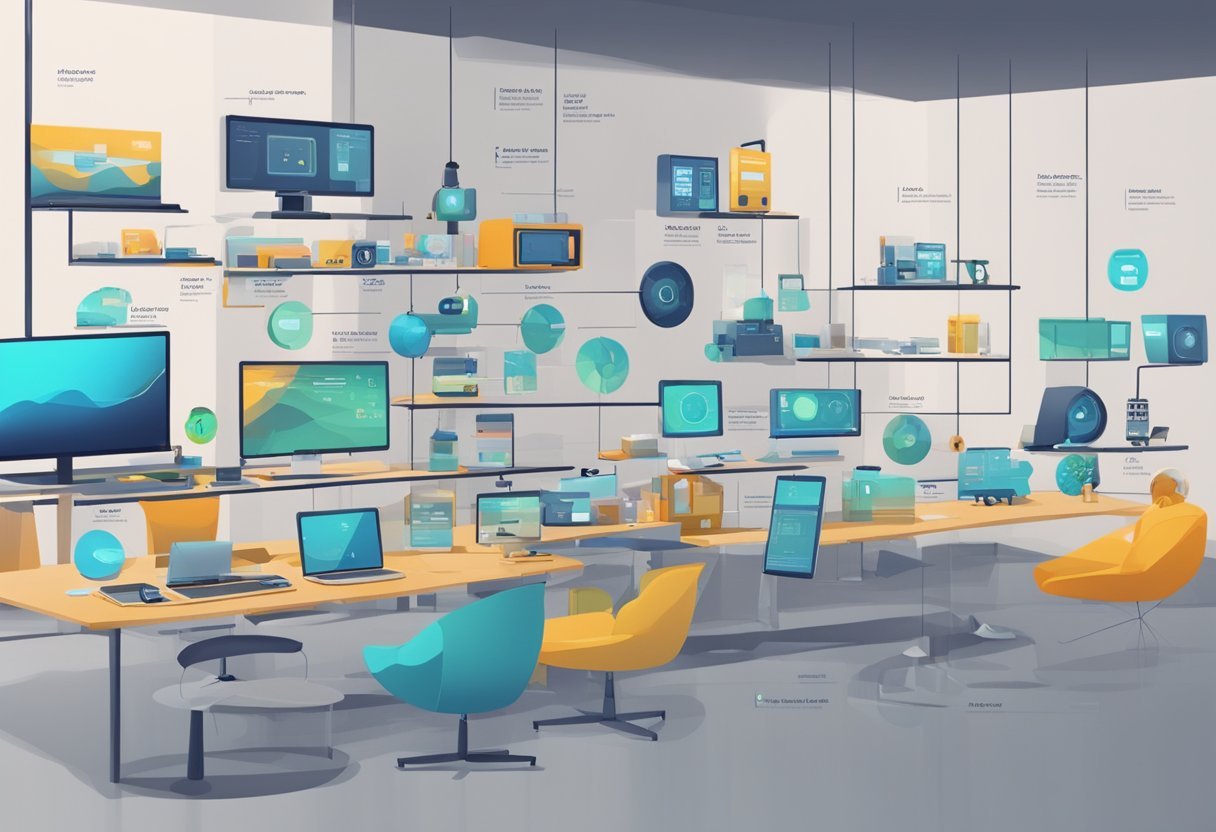Augmented reality (AR) is a technology that overlays digital information onto the real world. AR has become increasingly popular in recent years, and many mobile apps now incorporate this technology to enhance user experiences. AR apps are being developed for a wide range of purposes, from entertainment and gaming to education and business. In this blog post, I will share with you 15 apps with augmented reality, their functionalities and use cases.
Understanding Augmented Reality AR is a technology that enhances the real world by overlaying digital information. This information can be in the form of images, videos, or other types of content. AR technology is designed to work with mobile devices, such as smartphones and tablets, and can be used in a variety of settings.
Augmented Reality in Mobile Devices Mobile devices are the perfect platform for AR technology. They are portable, powerful, and have high-resolution screens that can display AR content in great detail. Many mobile devices also have built-in cameras and sensors, which allow them to detect and track real-world objects and surfaces. This makes it possible for AR apps to overlay digital content onto the real world in a way that is both accurate and immersive.
Understanding Augmented Reality
Augmented Reality (AR) is a technology that overlays digital information on the real world. It enhances the user’s perception of the environment by adding virtual objects to the real world. AR technology uses a camera, sensors, and a processor to track the user’s position and orientation in the real world and to render digital content in real-time.
The Basics of AR
AR technology uses various techniques to overlay digital content on the real world, such as marker-based AR and markerless AR. Marker-based AR uses a physical marker, such as a QR code or an image, to trigger the display of digital content. Markerless AR uses computer vision algorithms to detect the user’s environment and overlay digital content on it. AR can be experienced through various devices, such as smartphones, tablets, and AR headsets.
AR Technology and Hardware
AR technology relies on various hardware components, such as cameras, sensors, and processors. Cameras capture the real world, while sensors track the user’s position and orientation in the environment. Processors process the data from the cameras and sensors and render the digital content in real-time. AR technology also uses other hardware components, such as LiDAR sensors, which use laser beams to measure distances and create 3D maps of the environment.
Differences Between AR and VR
AR and Virtual Reality (VR) are often confused, but they are fundamentally different. VR creates a completely immersive digital environment that replaces the real world, while AR overlays digital content on the real world. VR requires a headset that completely covers the user’s eyes, while AR can be experienced through various devices, such as smartphones and AR headsets.
AR is becoming increasingly popular in various applications, such as gaming, education, and healthcare. The technology is constantly evolving, and new hardware and software are being developed to enhance the user’s experience.
Augmented Reality in Mobile Devices
Augmented Reality (AR) is a technology that overlays digital information on the real world. This technology has become increasingly popular in recent years, especially in mobile devices. AR in mobile devices allows users to experience digital content in a real-world environment. In this section, we will discuss AR on Android and iOS, ARCore and ARKit, and Smartphone AR Applications.
AR on Android and iOS
AR is available on both Android and iOS devices. Android devices use ARCore, while iOS devices use ARKit. Both of these technologies use the device’s camera and sensors to track the real-world environment and overlay digital content on top of it.
ARCore and ARKit
ARCore and ARKit are software development kits that allow developers to create AR applications for Android and iOS devices, respectively. These SDKs provide tools and resources for developers to create AR experiences that are optimized for the device’s hardware and software.
ARCore and ARKit use the device’s camera and sensors to track the real-world environment and overlay digital content on top of it. These SDKs also provide tools for developers to create 3D models, animations, and other digital content that can be overlaid on the real world.
Smartphone AR Applications
Smartphone AR applications are applications that use AR technology to provide users with an enhanced experience. These applications can be used for a variety of purposes, such as gaming, education, shopping, and more.
Google Lens is an example of a smartphone AR application that uses the device’s camera to recognize objects and provide information about them. This application can be used for a variety of purposes, such as identifying plants, translating text, and more.
The iPhone 12 Pro is an example of a smartphone that is optimized for AR applications. This device has a LiDAR scanner that provides accurate depth sensing, which can be used to create more realistic AR experiences.
AR technology in mobile devices has come a long way in recent years. With the continued development of ARCore and ARKit, as well as the increasing popularity of smartphone AR applications, it is clear that AR technology will continue to play a significant role in the future of mobile devices.
15 Apps with Augmented Reality
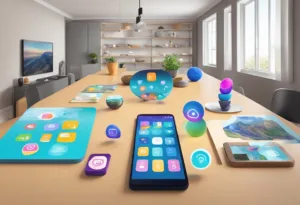
- IKEA Place
- Google Lens
- Google Translate
- SketchAR
- Just a Line
- Houzz
- YouCam Makeup
- GIPHY World
- Augment
- ROAR
- Amikasa
- Microsoft Math Solver
- Wanna Kicks: AR Sneakers Try On
- Blippar
- Wikitude
IKEA Place
IKEA Place leverages augmented reality to help users visualize how furniture and decor will look and fit in their own space before making a purchase. With this app, you can browse through IKEA’s catalog, select products, and see them placed in your room through your device’s camera. The app provides an accurate representation of the furniture’s size, design, and functionality, reducing the guesswork and potential dissatisfaction. It’s particularly useful for interior designers, homeowners, or anyone looking to renovate their space.
Google Lens
Google Lens is a powerful image recognition tool that uses augmented reality and machine learning to provide information about objects it identifies through the camera. By pointing your device at an object, text, or landmark, Google Lens can copy text, translate languages, identify plants and animals, and provide context or shopping options for items like clothes and furniture. It’s an invaluable tool for tourists, shoppers, and curious minds alike.
Google Translate
Google Translate’s AR feature allows users to translate text in real time using their phone’s camera. This is especially useful for travelers or anyone dealing with foreign languages on signs, menus, or documents. The app overlays the translated text over the original text in the viewfinder, making it easy to understand the context and meaning instantly.
SketchAR
SketchAR is for artists and aspiring creatives, turning any blank canvas into a virtual sketchbook. Using AR, the app projects a virtual image onto a surface, which users can then trace or use as a guide to draw. It’s a learning tool for those who want to improve their drawing skills and a new way to approach creative art projects.
Just a Line
Just a Line is a simple yet fun AR app that lets users draw in 3D space with their fingers. It’s a collaborative app that allows for multi-user drawing sessions, where people can create together in real-time over distances. It’s perfect for a quick, creative break or for anyone interested in experimenting with AR and art.
Houzz
Houzz’s AR feature, “View in My Room 3D,” allows users to visualize home products in their space. It helps in making informed decisions when it comes to home improvements and shopping for furniture and home accessories. For homeowners and professional designers, it’s a tool that enhances the planning and buying process.
YouCam Makeup
YouCam Makeup is an AR-powered beauty app that lets users try on makeup virtually. It offers real-time makeovers, skin analysis, and the ability to try different hair colors and styles. It’s a virtual beauty counter that’s useful for beauty enthusiasts and professionals who want to experiment with looks without the commitment.
GIPHY World
GIPHY World is an app that lets users place animated GIFs in a 3D space around them. It’s a playful way to express creativity and share scenes with friends. Users can record videos with the AR GIFs and share them on social media, making it a fun tool for social content creation.
Augment
Augment is an AR tool designed for sales and marketing professionals to showcase their products in real-world environments. It allows for the visualization of 3D models in AR, providing a tangible sense of scale and detail that can enhance presentations and pitches.
ROAR
ROAR is an AR platform that enables users to create their own AR experiences. It’s used for marketing, providing interactive content such as videos, links, and 3D models when scanning objects or images. It’s a versatile tool for educators, marketers, and publishers to engage with their audience.
Amikasa
Amikasa is a 3D room designer that uses AR to help users design and decorate their rooms with real furniture brands. Users can customize the color, position, and size of the furniture to fit their room layout. It’s a useful app for interior design enthusiasts and professionals who want to visualize room setups before making any physical changes.
Microsoft Math Solver
Microsoft Math Solver uses AR to help solve mathematical problems. By scanning a handwritten or printed problem, the app provides step-by-step explanations and similar examples to teach users how to solve it. It’s a valuable educational tool for students and educators alike.
Wanna Kicks: AR Sneakers Try On
Wanna Kicks is an AR app that allows users to virtually try on sneakers. By pointing the camera at their feet, users can see how different pairs of shoes will look on them. It’s a great tool for shoppers who want to try before they buy, without the hassle of going to a store.
Blippar
Blippar is an AR platform that turns physical branding and printed media into interactive experiences. By scanning objects or images with the app, users can unlock digital content such as videos, games, and animations. It’s a powerful tool for brands to engage with their audience in a novel way.
Wikitude
Wikitude is an AR platform that serves various industries, including tourism, education, and retail. It allows developers to create AR experiences that can include interactive 3D models, games, and location-based services. It’s a comprehensive tool for businesses looking to implement AR to enhance user engagement and provide innovative services.
Social Media and AR Filters
Snapchat is one of the most popular social media apps that has integrated AR technology into its platform. With the help of AR filters, users can add virtual elements to their photos and videos, making their content more engaging and fun. Instagram and Facebook have also followed suit, and now offer their own AR filters to users.
Gaming and Entertainment
Pokémon Go, developed by Niantic, is one of the most successful AR games to date. The game allows players to catch virtual Pokémon in the real world, using their smartphones. The game’s success has paved the way for other AR games, such as Harry Potter: Wizards Unite and Ingress.
Entertainment apps like Sky Map and Civilisations AR offer users a unique way to explore the world around them. Sky Map uses AR technology to help users identify stars, constellations, and planets in the night sky. Civilisations AR, on the other hand, allows users to explore ancient artifacts and learn about history in a fun and interactive way.
Educational and Scientific Apps
Froggipedia is an AR app that allows users to dissect a virtual frog, without harming any real animals. The app is designed to help students learn about the anatomy of a frog, and is a great tool for teachers to use in the classroom. Sky Map, mentioned earlier, is also a great educational tool for astronomy enthusiasts.
AR technology has come a long way and has now become an integral part of our daily lives. From social media filters to educational apps, AR has opened up a whole new world of possibilities. As technology continues to evolve, we can expect to see even more innovative AR apps and experiences in the future.
Real-World Applications of AR
Augmented reality (AR) is a technology that combines virtual reality with the real world, allowing users to experience a digitally enhanced version of their surroundings. With the increasing popularity of AR, many industries are incorporating it into their products and services. This section will explore some real-world applications of AR in the retail, furniture, and navigation industries.
Retail and Virtual Try-On
One of the most popular applications of AR is in the retail industry. AR technology has made it possible for customers to try on products virtually before making a purchase. This feature has been particularly useful in the fashion industry, where customers can try on clothes and accessories virtually. Companies like Wanna Kicks have developed AR apps that allow customers to try on shoes virtually, giving them an idea of how the shoes will look on their feet.
Furniture and Interior Design
AR technology has also been used in the furniture and interior design industry. Companies like IKEA Place and Amikasa have developed AR apps that allow customers to see how furniture will look in their homes before making a purchase. These apps use the camera on the user’s phone to create a digital model of the room, allowing the customer to place furniture virtually. This feature has been particularly useful for customers who are unsure about how a piece of furniture will look in their home.
Navigation and Maps
AR technology has also been incorporated into navigation and maps. Google Maps Live View is an AR feature that allows users to navigate their surroundings using their phone’s camera. The feature overlays digital images on top of the real-world environment, making it easier for users to find their way. Houzz, an interior design company, has also developed an AR feature that allows users to see how a piece of furniture will look in their home using their phone’s camera.
AR technology has many real-world applications in various industries. From retail to furniture and navigation, AR has made it possible for users to experience a digitally enhanced version of their surroundings. As the technology continues to evolve, we can expect to see even more innovative applications of AR in the future.
Developing for Augmented Reality
Augmented reality is a rapidly growing field that offers developers a new way to create engaging and interactive experiences for users. In this section, we’ll explore the tools and techniques that developers can use to create augmented reality experiences that are both engaging and intuitive.
Tools for AR Development
Developers have several tools at their disposal for creating augmented reality experiences. ARKit and ARCore are two popular AR development platforms that provide developers with the tools they need to create immersive AR experiences. SketchAR and Just a Line are two other tools that allow developers to create AR experiences quickly and easily.
Developers can use Giphy World to create AR experiences that are both fun and engaging. These tools provide developers with the ability to create AR experiences that are both visually stunning and interactive.
Designing AR Experiences
Designing AR experiences requires a unique approach that takes into account the user’s physical environment. Developers must consider the user’s surroundings when creating AR experiences to ensure that the experience is both intuitive and engaging.
When designing an AR experience, developers must also consider the user’s interaction with 3D models. AR experiences can be challenging to design, as they require a unique approach that takes into account the user’s physical environment.
Challenges for AR Developers
Developing for AR presents several challenges for developers. One of the biggest challenges is creating AR experiences that are both engaging and intuitive. Developers must also consider the limitations of AR technology when creating AR experiences.
Another challenge for developers is creating AR experiences that are compatible with a wide range of devices. AR experiences can be challenging to create, as they require a unique approach that takes into account the user’s physical environment.
Dveloping for AR requires a unique approach that takes into account the user’s physical environment. Developers have several tools at their disposal for creating engaging and interactive AR experiences. By considering the user’s surroundings and the limitations of AR technology, developers can create AR experiences that are both visually stunning and intuitive.
Frequently Asked Questions
What are the top-rated augmented reality apps for iOS devices?
There are several top-rated augmented reality apps available for iOS devices. Some of the most popular ones include Snapchat, Google Lens, and IKEA Place. Snapchat is a social media app that uses augmented reality filters to enhance user experience. Google Lens is an image recognition technology that can identify objects and provide relevant information. IKEA Place is a furniture shopping app that allows users to visualize how furniture would look in their homes using augmented reality.
Can you recommend any educational augmented reality apps that are free?
Yes, there are several educational augmented reality apps that are free to download. One such app is Quiver, which allows users to bring their coloring pages to life using augmented reality. Another app is Google Translate, which uses augmented reality to translate text in real-time.
Which augmented reality apps for Android are considered the best?
Some of the best augmented reality apps for Android include Snapchat, YouCam Makeup, and SketchAR. Snapchat and YouCam Makeup are social media apps that use augmented reality filters to enhance user experience. SketchAR is an app that allows users to draw in augmented reality using their smartphones.
How can I use augmented reality on my iPhone?
To use augmented reality on an iPhone, you need to have a compatible device and download an AR-enabled app. Once you have downloaded the app, you can use your iPhone’s camera to scan the environment and interact with virtual objects.
Are there any Google-developed augmented reality apps available?
Yes, Google has developed several augmented reality apps, including Google Lens, Google Maps, and Google Translate. Google Lens is an image recognition technology that can identify objects and provide relevant information. Google Maps uses augmented reality to provide users with directions and information about their surroundings. Google Translate uses augmented reality to translate text in real-time.
What are some prime examples of augmented reality software for various applications?
Augmented reality has a wide range of applications, from gaming to healthcare. Some prime examples of augmented reality software include Pokémon Go, a popular mobile game that uses augmented reality to allow users to catch virtual creatures in the real world. Another example is surgical assistance software that uses augmented reality to help surgeons during complex procedures.

